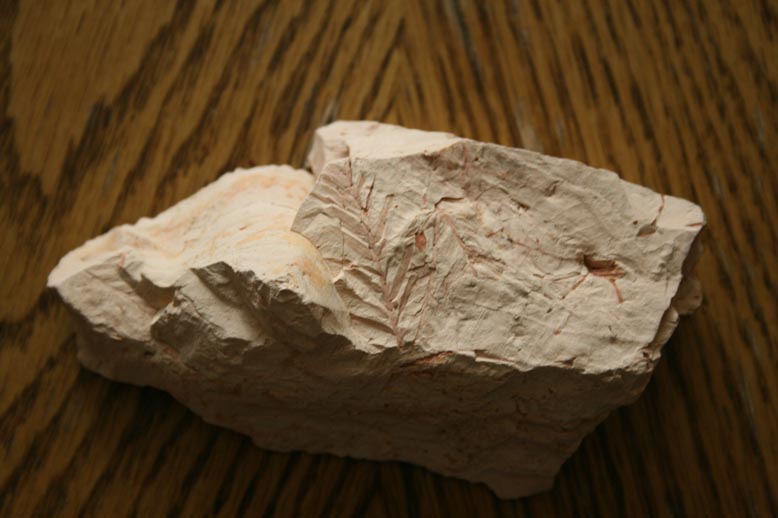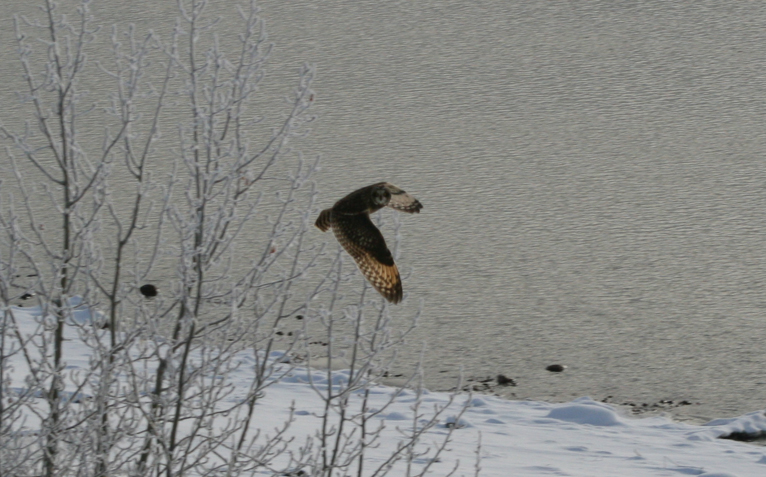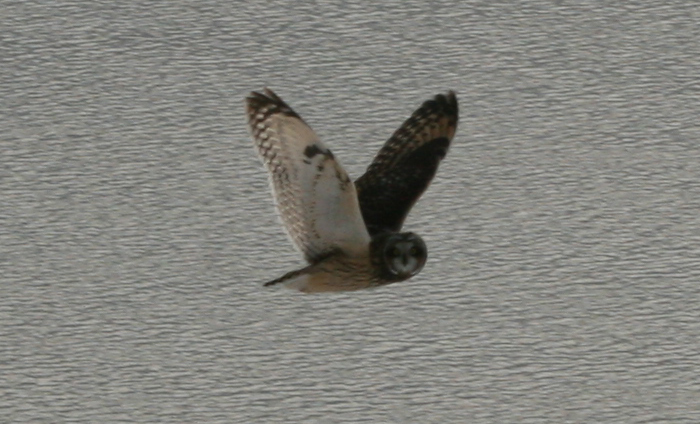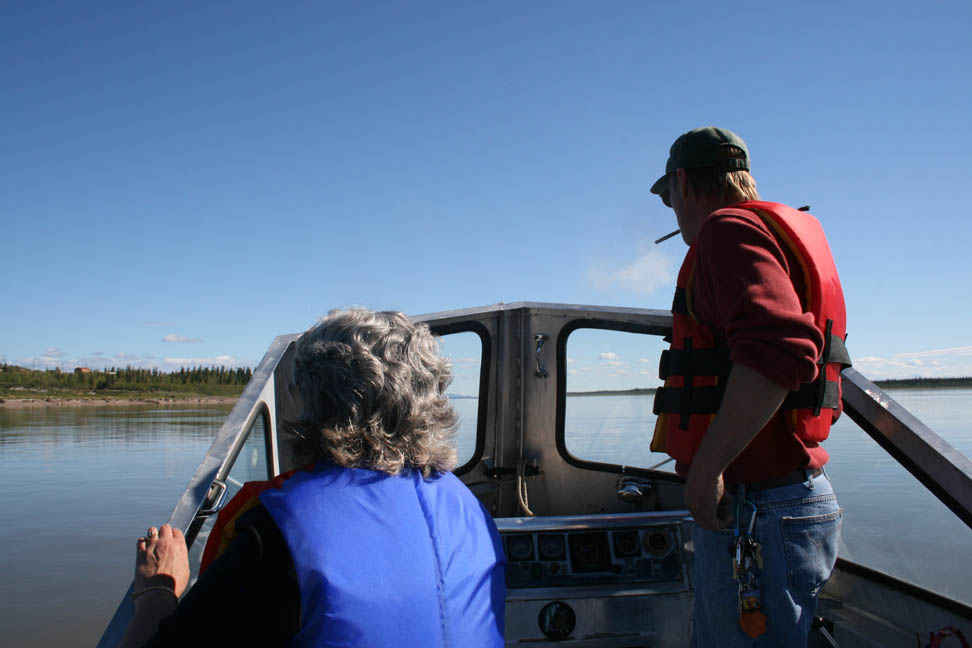 Captain Ron showed up in Tulita the week after he took me four wheeling in Norman Wells. He came by boat on a Saturday, and on Sunday morning he called Nicole and I, asking us if we wanted to go for a little tour south on the Mackenzie.
Captain Ron showed up in Tulita the week after he took me four wheeling in Norman Wells. He came by boat on a Saturday, and on Sunday morning he called Nicole and I, asking us if we wanted to go for a little tour south on the Mackenzie.This was the last weekend in August. It was still summer and it was a sunny, warm day, but we put on sweaters because it can get surprisingly cold out on the water.
Ron’s wife Wendy was along for the ride too. Ron had one of his trademark captain black cigars clutched between his teeth as we drove past flocks of geese and ducks already gathering for their flight south.

We traveled for about an hour and a half past endless trees and rocks. Occasionally we passed groups of cabins and with blue-tarp teepees outside. Ron seemed to know who owned each one.
The scenery grew a bit monotonous after a while, but every so often you would round a bend to see a mountain off in the distance. In the exposed cliffs of the riverbank we could see coal seams and once, a layers of kimberlite, the rock geologists look for when they are looking for diamonds.
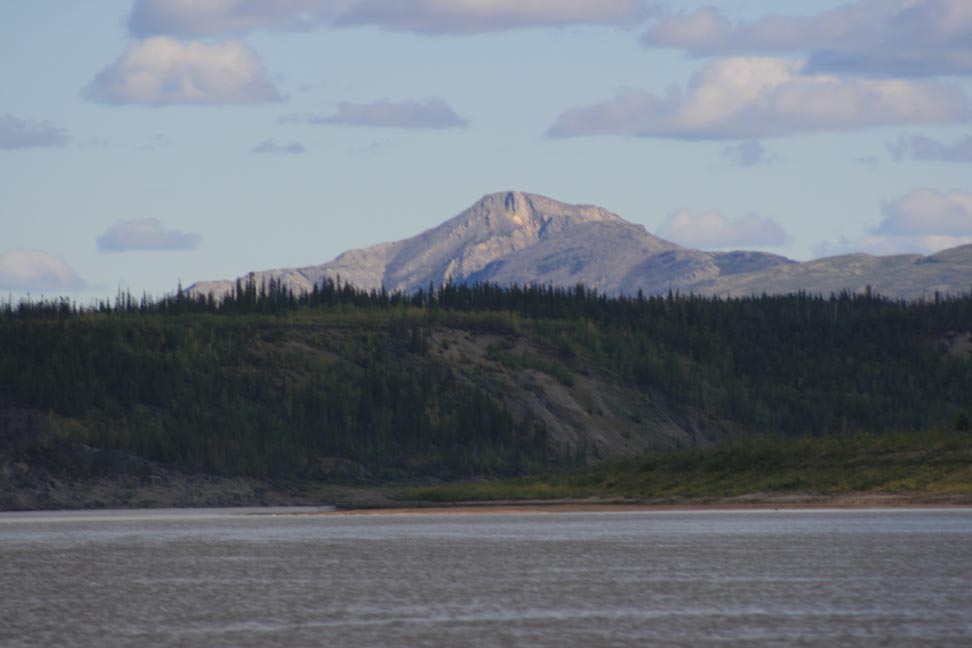
We stopped at “Old Fort Point,” where a family from Tulita has a group of log cabins. No one was home, but we got out to admire the cabins. They were beautifully constructed, but small and humble at the same time. Some were barely twenty feet by twenty feet, but they had all one could ask for.
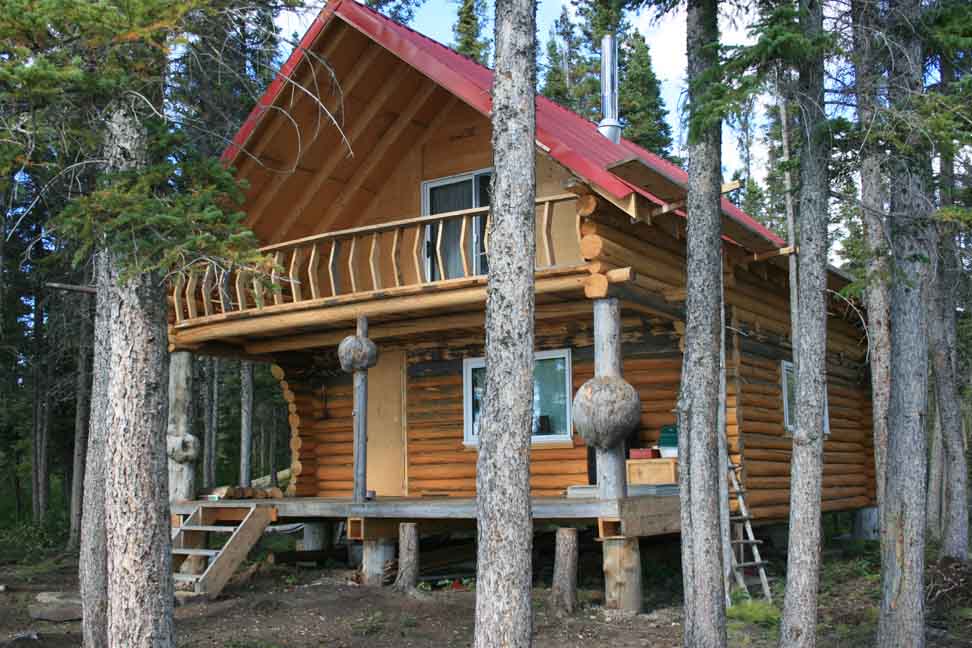
Old Fort Point was once the site of a fort, possibly the original “Fort Norman” and Ron said you can find the ruins of the fort if you look, but we were starting to run short on time, and he said there wasn’t much to see. No Parks Canada interpretation plaques here. Just the name passed down for several hundred years by the locals.
I was getting cold as we traveled back, but I tried to ignore the discomfort and take in the scenery. About halfway back, someone spotted a black bear on the eastern bank, and Ron spun the boat around so we could go in for a closer look. It of course took off into the woods before we could get really close.
Four miles south of Tulita is a spot known locally as “The Smokes.” It is where an exposed coal seam has been smoldering for hundreds, perhaps thousands of years. Alexander Mackenzie, the explorer for whom the river is named, noted the smoke rolling from the ground when he first paddled up the river in 1789. Although it was getting late in the day, Ron’s wife Wendy insisted that we stop in for a look. They had mentioned something about fossils, but I was unprepared for what we were about to find.
 There was a bit of smoke coming from the cliffs up the river. You could smell it in the air. The beach was littered with pink colored rocks, and on closer inspection we found that each pink rock was covered in leaf imprints. It was literally impossible to pick up a rock that didn’t have an imprint of some kind. The challenge wasn’t finding a fossil, but finding a good, clear imprint that stood out from the tens of thousands of mediocre fossils.
There was a bit of smoke coming from the cliffs up the river. You could smell it in the air. The beach was littered with pink colored rocks, and on closer inspection we found that each pink rock was covered in leaf imprints. It was literally impossible to pick up a rock that didn’t have an imprint of some kind. The challenge wasn’t finding a fossil, but finding a good, clear imprint that stood out from the tens of thousands of mediocre fossils.Ron started a small fire to roast some wieners. Nicole, Wendy and I clambered over the banks, collecting some of the better specimens we could find. Ron is an evangelical Christian and he was unimpressed by the fossils. Earlier in the day I had
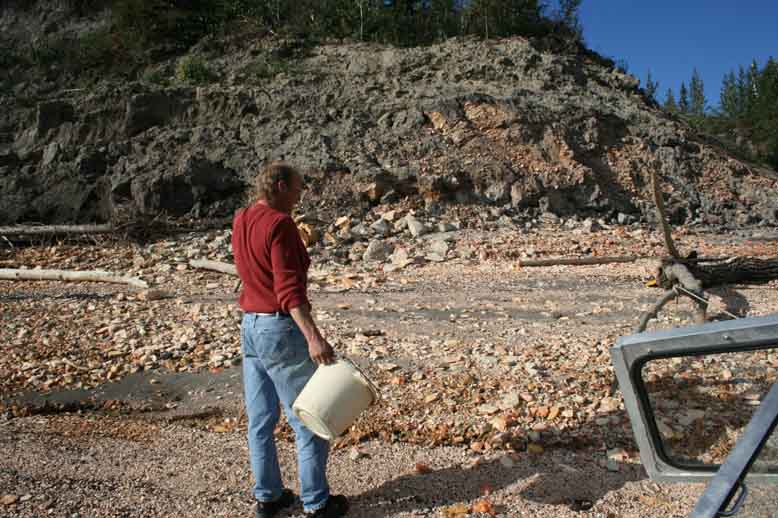 told him about some petrified wood I had found on the banks of Great Bear River, and he told me how wood actually petrifies over decades instead of thousands of years. He said there is a museum in the states has a petrified tennis shoe. Instead of looking for fossils, he filled a Rubbermaid tub with the rocks to use as gravel on his walkway.
told him about some petrified wood I had found on the banks of Great Bear River, and he told me how wood actually petrifies over decades instead of thousands of years. He said there is a museum in the states has a petrified tennis shoe. Instead of looking for fossils, he filled a Rubbermaid tub with the rocks to use as gravel on his walkway.With our boat heavily laden with a few hundred extra ponds of rocks, it was difficult to get back up to speed. We arrived back in Tulita around six and unloaded our fossils. Ron still had an hours trip ahead of him north to Norman Wells. We thanked them for another memorable trip.
